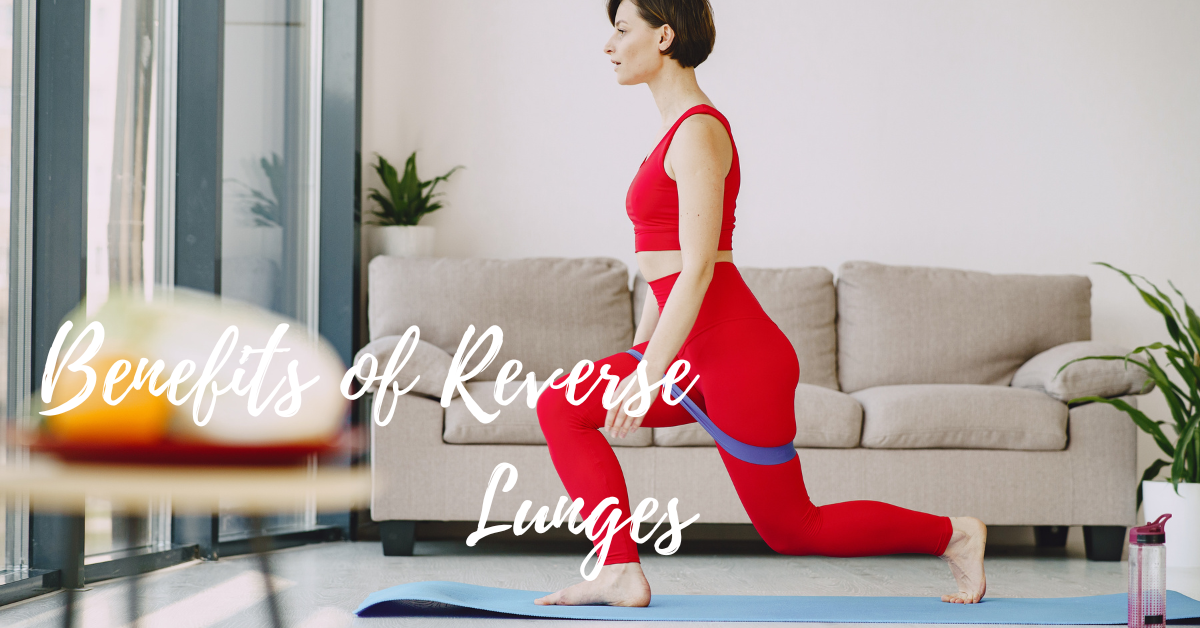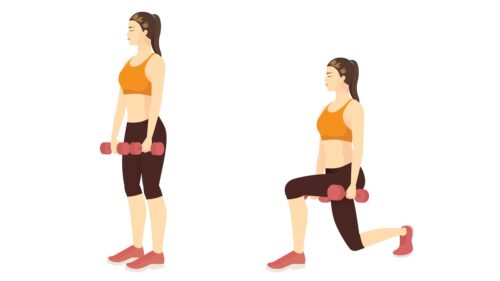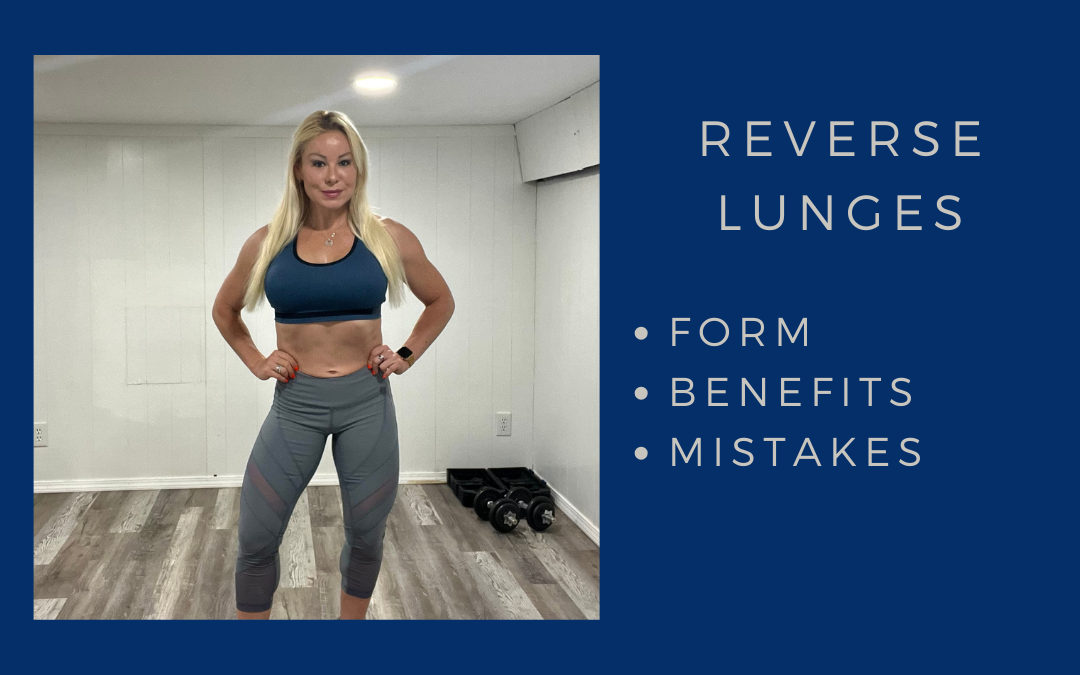The way to develop great legs and glutes is by applying diversity to your workouts. The legs encompass big muscle groups, such as the gluteal muscles (glutes), the quadriceps (front of the leg), the hamstrings (muscles in the back of the leg), and the flexor group (lower leg). So, they have to be trained with different exercises and diverse planes of motion. Let’s look at the reverse lunge or rear lunge, a wonderful leg exercise.
What Muscles Do Reverse Lunges Work?
Reverse lunges primarily target:
-
Hamstrings (Back Thigh Muscles): The hamstrings are involved in the movement, especially when you lower your body during the lunge.
-
Gluteal Muscles (Glutes): Both the gluteus maximus and gluteus medius are activated, particularly when you push back up to the standing position.
- Quadriceps (Front Thigh Muscles): The quadriceps are heavily engaged as you push off the ground to return to the starting position.
Secondary muscles involved:
- Hip Flexors: The hip flexors, including the iliopsoas, are involved as you lift your leg to step back into the lunge position.
- Calves (Gastrocnemius and Soleus): These muscles in the lower leg are worked as they help stabilize and control the movement.
- Core Muscles: Your core muscles, including the abdominals and obliques, are engaged to maintain stability and balance during the lunge.
- Adductors (Inner Thigh Muscles): The adductors are involved in stabilizing the leg as it moves backward.
- Erector Spinae (Lower Back Muscles): These muscles help stabilize the spine during the movement.
Benefits of Reverse Lunges

-
Leg Muscle Development & Strength: Reverse lunges heavily engage the hamstrings and quadriceps, helping to strengthen and tone the muscles at the back and front of your thighs.
-
Glute Activation: This exercise engages the glute muscles, helping to strengthen and shape the buttocks.
-
Efficiency: The reverse lunge is a compound exercise that works for multiple joints and muscle groups simultaneously.
-
Fat Loss: Since it works multiple muscles, it helps burn more calories and, subsequently, lose more fat.
-
Aesthetics: Reverse Lunges help sculpt a rounded boot and beautiful legs.
-
Balance: This unilateral exercise, trains each leg separately, activates your stabilizing muscles, and helps enhance overall stability and balance, contributing to better functional fitness.
-
Alignment: Working one leg at a time, also, helps you to deal with misalignments in your body and correct imbalances. This makes you more symmetrical and avoids overcompensating from your dominant side.
-
Flexibility & Mobility: Reverse lunges involve a big movement, which helps you increase your hip’s range of motion and make you more mobile. Their dynamic nature also encourages knee flexibility, promoting better joint health.
-
Core Strengthening: The core muscles are engaged to stabilize the body during the movement, which can help you improve core strength and posture over time.
-
Functional Movement: The reverse lunge mimics many real-life movements, such as stepping backward or climbing stairs, making it a functional exercise that can improve daily activities.
-
Versatility: This exercise can be easily modified to suit different fitness levels. For example, you can increase the difficulty by holding weights or focus on stability by performing the exercise on an unstable surface.
-
Cardiovascular Component: Incorporating reverse lunges into a high-intensity workout can elevate your heart rate, providing benefits for your cardiovascular system along with strength training.
-
Minimal Equipment: Reverse lunges can be performed with little to no equipment, making them a convenient and accessible exercise that can be done virtually anywhere.
-
Variety in Training: Including this movement in your workout routine adds variety to your lower body exercises, helping to prevent boredom and plateaus in progress.
How to Perform Rear Lunges

There are a few ways of doing reverse lunges. If you are a beginner, you can use your body weight and keep your arms bent in front of your torso or by your sides. Or you can do reverse lunges with dumbbells or reverse lunges with a barbell. Here is how to proceed:
- Begin by standing with your feet hip-width apart, standing tall with your chin and chest up, shoulders back, and your core tight.
- Lift one foot off the ground and take a step backward.
- As you step back, lower your body by bending your front knee and landing on the ball of your back feet. Your back knee should hover just above the ground, and your front knee should form a 90-degree angle.
- Keep your upper body straight, and make sure your front knee is directly above your ankle. Avoid leaning too far forward or backward.
- Push through your front heel to return to the starting position. Bring your back foot forward to meet your front foot.
- Alternate legs and repeat the lunge on the other side or stay on that same leg for the desired amount of reps and switch legs.
It’s worth noting that the reverse lunge is a versatile exercise that can be modified to emphasize different muscle groups. For example, taking a longer step back may place more emphasis on the glutes and hamstrings, while a shorter step may target the quadriceps to a greater extent.
Do you want to challenge yourself more?
Perform a variation called reverse lunge with knee hops. Initiate the movement as normal. Then, when you are returning the leg to the standing position, bring your trailing leg through and drive the knee up to chest height. Return to the initial stance and repeat.
Reverse Lunges Mistakes
Now that you know how to perform reverse lunges, pay attention to your form so you can avoid the most common mistakes associated with this exercise:
- Poor Posture: Avoid keeping your shoulders forward, rounding your back, leaning too far forward, or rounding the back. Keep an upright posture throughout the movement with your chest up, shoulders back, and core engaged.
- Incorrect Stride Length: Taking too large of a step can push you off balance and you may not have the strength to get back up. Taking too small of a step does not engage the muscles sufficiently.
- Improper Front Knee Alignment: Allowing your front knee to collapse inward or pass your toes can stress the knee joint and not allow proper muscle engagement. Maintain the front knee in line with the toes, pointing in the same direction. Your knees should bend at a 90-degree angle when you lower your body.
- Moving Back in a Harsh Manner: Allowing the back knee to touch the ground too hard can have too much of an impact on the knee. Aim to lower the back knee gently toward the ground without slamming it down in a controlled movement.
- Not Keeping your Foot Aligned: You should not allow the forward foot to turn outward or inward. Try to keep the forward foot pointing straight ahead to maintain proper alignment and prevent unnecessary stress on the knee and hip.
- Neglecting the Heel: Lifting the heel of the front foot during the lunge removes some muscle engagement and can make you unstable. Keep the heel of the front foot planted on the ground throughout the movement.
- Not Engaging Core Muscles: You should keep your core muscles engaged throughout the exercise to stabilize your spine, improve balance, and perform proper movement dynamics.
- Rushing through the Movement: Having too fast of a pace can increase your risk of injury and not allow you to maintain proper form. Control the movement by performing reverse lunges slowly and focusing on maintaining balance.
Video: Reverse Lunges with Dumbbells
Leg Workout
You can complete your lower body workout with the following exercises:
As you can see, the reverse lunge is a wonderful leg exercise. It offers numerous benefits associated with hypertrophy, improved balance, strength, and endurance. Now that you know the correct form to properly perform reverse lunges, you can avoid the most common mistakes associated with this exercise and get a great workout.
Remember, whether you want to lose weight, tone your body, gain strength, or increase muscle size, all muscles must be trained – Lift, Burn more Fat, Get Stronger, and Live Healthier!
To a Fitter Healthier You,
The Fitness Wellness Mentor



